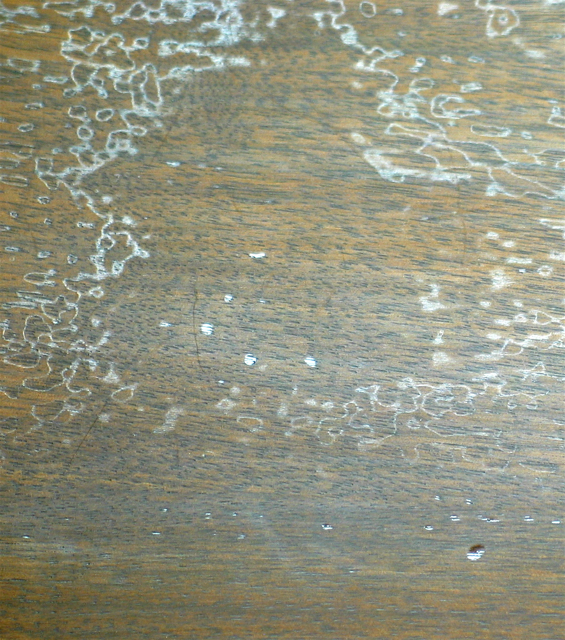We may receive a commission when you use our affiliate links. However, this does not impact our recommendations.

A woodworker asked me recently, “What the heck is a witness line?”
Well, this opens up an interesting discussion. One of my pet peeves since I began teaching finishing, has been people creating new terminology when quite adequate terminology already exists. There’s no better example than “witness lines,” which is a new term for “ghosting” or “layering” that appears when you sand or rub through one layer of finish into the one below.
You can recognize this problem when the flawed area you’re trying to remove keeps getting bigger rather than smaller – like sanding through veneer.
The term “ghosting” is the traditional name for this phenomenon. As it starts to appear, you see the “ghost” of the finish layer underneath. It is also called “layering,” which describes the phenomenon well, and is the term I’ve used in my writings. The term “witness lines” doesn’t describe this finish problem well. The term comes from injection molding where a line can appear in the plane where the two halves of the mold meet.
Despite this term being a poor choice for describing ghosting or layering, it seems that witness lines has become the favored term in many recent wood-finishing articles and books. I guess you just have to learn the definition or substitute in your mind one of the other two terms.
Ghosting or layering doesn’t occur with shellac and lacquer finishes because each coat dissolves into the previous one so that all coats become one. Dissolving doesn’t happen with varnishes, including polyurethane varnish, or with most water-based and catalyzed finishes. The separate coats form separate layers and are therefore vulnerable to ghosting.
Sometimes you can disguise ghosting by rubbing with an abrasive such as steel wool. The problem is still there, but the scratches hide it.
The better solution is to apply another coat of finish after you have removed all the problems that caused you to sand deep in the first place. Then level and rub out this new coat without going through it.
– Bob Flexner
Here are some supplies and tools we find essential in our everyday work around the shop. We may receive a commission from sales referred by our links; however, we have carefully selected these products for their usefulness and quality.









A witness line or mark is simply a method to line up pieces. A line across two boards to align them properly for a biscuit or dowel would be one type of witness line. Creating unique marks on joints on disassembly, so it can be assembled correctly is another kind of witness line. Lots of uses, but it has nothing to do with finishes.
Roll your own vocabulary is especially annoying when it crosses multiple fields. Even worse when those fields come together at some point.
Witness lines in geometric dimensioning (the measurements on blueprints, plans, etc…) are lines that allow multiple references to a permanent measurement.
Somewhat less commonly you see the term used in large scale photolithography used in the manufacturing of multi layer circuit boards (they’re usually referred to as registration marks these days).